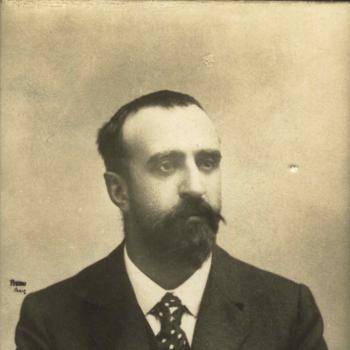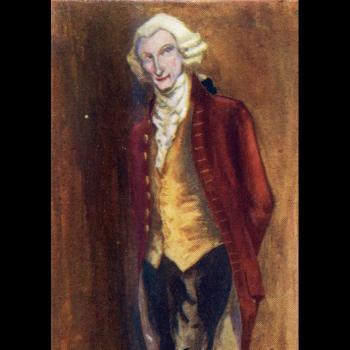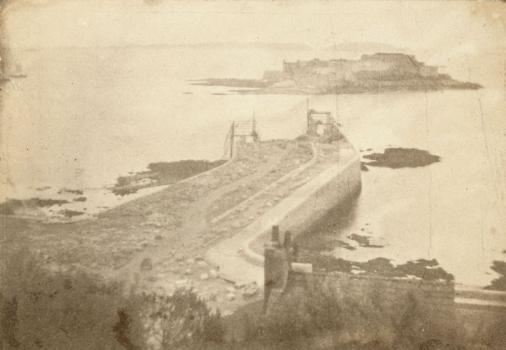6th March 2019
Jean-Baptiste Charcot, ‘the Polar Gentleman.’ Doctor, sportsman, Olympic medallist, polar explorer, friend of Captain Scott, and husband of Victor Hugo's grand-daughter Jeanne, this admirable French hero reserved a special place for Guernsey. [By Dinah Bott]
13th November 2018
From Ferdinand Brock Tupper's History of Guernsey, printed by Stephen Barbet, New Street, Guernsey, 1854, p. 434. 'From the MS of a Guernsey jurat, now deceased, written in 1839 or 1840, we extract the following:'
7th November 2018
Once a magnificent farm house with 15 bedrooms, made of the best blue granite, said to be haunted, the old house of the [de] La Marche family in St Martin's saw highs and lows. Its story ended with demolition by the Occupying Forces in 1944, and the memory of the house itself and a reputed connection with Victor Hugo became shrouded in mystery. It is quite possible that Victor Hugo admired the house - he certainly would have admired its wonderful situation, and is quoted as saying (in the advertisement above from a 1915 tourist brochure), 'Live at Icart, live forever!,' but there is no evidence he ever set foot in it. His family, however, were indeed intimately connected with it. [By Dinah Bott]
24th October 2018
Opinions on the building of the Castle Emplacement from Victor Hugo and his son Charles. Charles took the accompanying photograph, The Castle Emplacement under construction, c 1856; he also took a fine study of St Catherine's Breakwater in Jersey some years earlier. (Hugo family friend Auguste Vacquerie was also an excellent photographer, and may possibly be responsible for this photograph, but Charles shared his father's appreciation of the effort and skill required to build these types of structures, and of the progress and growth they embodied, and is likely to have found this and the Jersey breakwater an appealing subject). The photograph is in the collection of Paris Musées: Construction de la digue reliant le château Cornet au port, attribuée à Charles Hugo, 1855-6. [By Dinah Bott]
22nd October 2018
The loss of the paddle-steamer Normandy, 17 March 1870
15th October 2018
The exiled Victor Hugo was forced to leave Jersey very quickly. Here he describes his arrival in Guernsey in a letter to his wife, Adèle Foucher, who had remained for the time in Jersey. The image is from a set of engravings of drawings by Hugo in the Priaulx Library collection.
9th July 2018
'A slightly coloured sketch.'An oaken chest, half eaten by the worm, But richly carved by Anthony of Trent, With Scripture stories from the life of Christ; A chest that came from Venice, and had held The ducal robes of some old ancestor. That by the way—it may be true or false.[From] Rogers’ Italy.By Samuel Elliott Hoskins. Victor Hugo was not, it would seem, the first to transform the carved wooden chests of Guernsey into some other form of decorative furniture. De Beauvoir De Lisle got there before him!
5th July 2018
By Thomas Cave, from the North Devon Journal, September 20 1866. 'It is always interesting to trace the home and associations of an eminent author and to realize a little of the inner life of the man whose works instruct or amuse us, especially when the impress of his mind is so visibly traceable in the material objects about him. It seems as if the fanciful taste which has arranged all these materials at its will in turn receives daily promptings from its very creation.' The engraving of The Oak Gallery is by one of Hugo's favoured artists, Fortune Méaulle, from Alfred Barbou's Victor Hugo and his times, New York: Harper, 1881, in the Library Collection.
19th March 2018
The Priaulx Library has many photographs and cartes de visite by Arsène Garnier, including many of Victor Hugo and his family. This is part of the Victor Hugo and Guernsey project. The carte de visite above is a studio self-portrait from the Library collection, with Garnier's signature red outline and text.
6th December 2017

Observations and reminiscences from author Theodora Teeling, from The Star, May 4, 1880. Mrs. Bartle Teeling (née Theodora Louisa Lane Clarke) was born in Guernsey in 1851, the only child of the Rev. Thomas Clarke, Rector of Woodeaton, Oxford, and Louisa Lane, scientist and author of topographical and historical works on the Channel Islands, including contributions to MacCulloch's Guernsey Folk Lore. Theodora 'spent her childhood in Woodeaton, Oxford, where her father was rector. On his death his widow returned with their only child to Guernsey,' in 1865. They lived at L'Hyvreuse Lodge in St Peter Port. In Guernsey her mother Louisa 'became a centre of literary and scientific interest and mental activity as student and writer of natural history, etc., and author of several scientific manuals.'¹ In 1879 Theodora married Bartle Teeling (1848-1921), Captain in the Rifle Brigade, Secretary (1872) of the Catholic Union of Ireland, and Private Chamberlain to the Pope. She died in 1906. Theodora dates her reminiscences to 1867 ('12 years since'), when she would have been aged 16, and to 1878, only two years before she wrote this piece. She would have been 27 years old. The first scene, however, if she has not conflated two Christmases, must date to 1864 or before, as she includes Hugo’s son, François-Victor, in it: or it was indeed 1867, and she has misidentified the men she saw; or she has embellished the truth a little.








